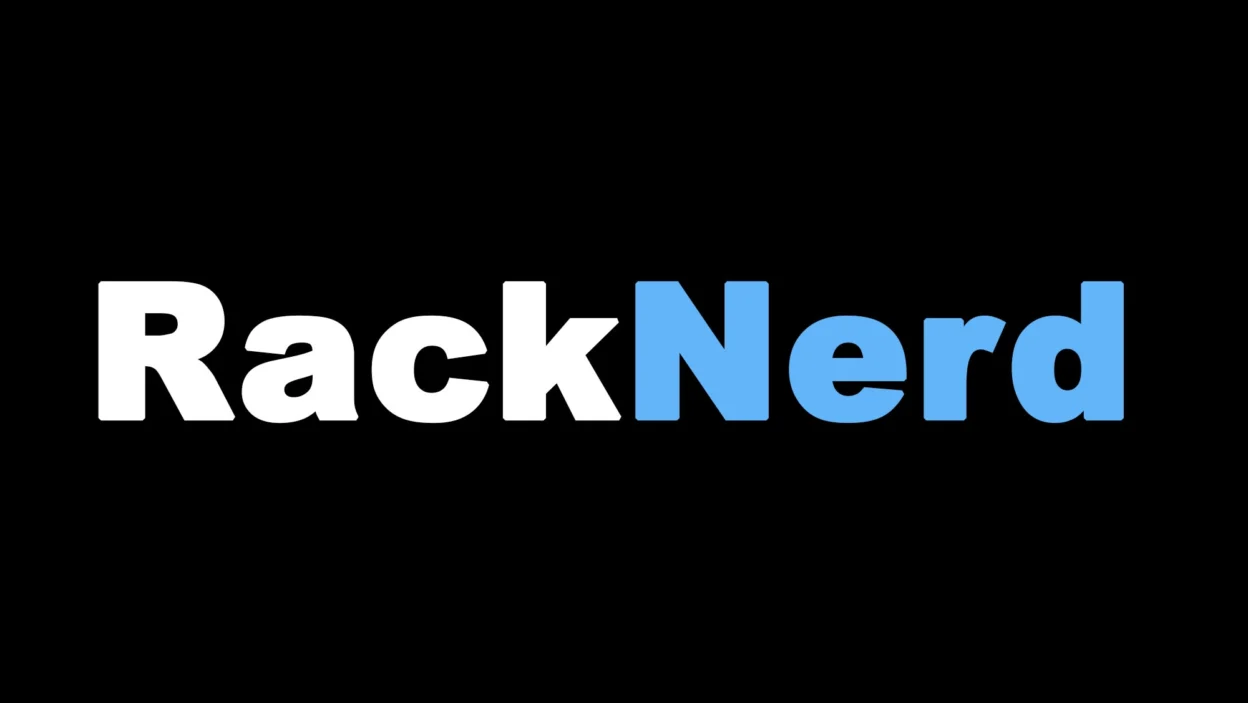This article was contributed by Dustin B. Cisneros from RackNerd, a seasoned contributor of the hosting industry for 16+ years. RackNerd has also been consistently voted, year over year as a top provider within the LowEndBox/LowEndTalk community. Are you looking for a new VPS? Be sure to take a look at their latest promotions by clicking here!
Are you ready for some nostalgia? For those who have been involved in the hosting industry for over a decade, myself included, may remember the days of HyperVM and LxLabs. How about VAServ and Russ Foster? Do any of these names ring a bell as we take a trip down memory lane?
In the early days of the VPS hosting industry, before 2009, HyperVM was the go-to solution for VPS control panels. Nearly every hosting provider, including many listed here on LowEndBox, relied on HyperVM to manage their virtual private servers.
Screenshot of HyperVM VPS Control Panel
However, tragedy struck in June 2009 when the owner of HyperVM/LxLabs, K T Ligesh, committed suicide, leaving the future of HyperVM uncertain.
HyperVM and the VAServ Incident
In the early days of VPS hosting, Russ Foster was a well-known figure in the LEB community. Foster ran a large-scale VPS hosting company called VAServ (which operated brands such as “fsckvps”), which utilized HyperVM to manage its virtual machines.
However, in 2009, VAServ suffered a catastrophic security breach. The intrusion was as a result of a zero-day exploit in HyperVM, the virtualization management application developed by K T Ligesh’s company, LxLabs. This occurred around the same time as the apparent suicide of Ligesh, as reported by The Register and throughout this 106-page thread on WHT.
The Birth of SolusVM
In the wake of HyperVM’s uncertain future, a new player emerged in the VPS control panel market: SolusVM. Founded by Phill Bandelow, SolusVM quickly gained traction as the preferred choice for VPS providers. It operated on a per-physical server licensing model, and still does to this day. This means VPS providers pay for licensing per physical hypervisor.
SolusVM Website & Licensing Model in 2009 from archive.org
As HyperVM was no longer actively developed, providers using HyperVM and new VPS providers entering the market flocked to SolusVM, recognizing its potential and the need for a reliable, feature-rich control panel.
What SolusVM Looked Like Back Then
What SolusVM (V1) looks like today
Virtualizor: The SolusVM Alternative by Softaculous
Screenshot of Virtualizor VPS Control Panel
In the wake of SolusVM’s rise, another player entered the VPS control panel market: Virtualizor. Developed by Softaculous, a software company well-known for its one-click script installer used by shared hosting providers, Virtualizor was designed to be a viable alternative to SolusVM.
Virtualizor supports a wide range of virtualization technologies, including OpenVZ, KVM, Xen, Proxmox, and LXC. It offers a feature set comparable to SolusVM and operates on a similar pricing model, with prices just a dollar cheaper per month than SolusVM.
While Virtualizor has managed to capture a portion of the market, with a handful of providers still utilizing the control panel to this day, it has faced criticism from some members of the LowEndTalk (LET) community. Reports of bugs, rushed releases, and stability issues have led some to view Virtualizor as a less-than-ideal solution. This situation is not uncommon in software development, especially when a product tries to cater to too many use cases instead of focusing on its core strengths. In the case of Virtualizor, it appears that the emphasis on supporting a wide range of virtualization technologies and introducing numerous features may have come at the expense of stability and reliability, which are crucial factors for hosting providers.
In comparison, SolusVM (V1), despite being less feature-rich and less actively developed than Virtualizor, has built a reputation for its stability. Many providers have stuck with SolusVM due to its proven track record of reliability, even in the face of newer, more feature-packed alternatives like Virtualizor.
As the VPS control panel market continues to evolve, it will be interesting to see how Virtualizor continues to fare against SolusVM and newer entrants like VirtFusion.
SolusVM’s Ownership Changes
SolusVM’s success didn’t go unnoticed. In 2014, OnApp acquired SolusVM, bringing it under new ownership. However, this wasn’t the last change for the popular control panel. In 2018, SolusVM was sold once again, this time to Plesk/WebPros. Throughout these ownership changes, Phill Bandelow remained involved with the project until around 2021.
The Long-Awaited SolusVM 2.0
“`html
During the OnApp ownership days, there was much anticipation and discussion surrounding the release of SolusVM 2.0. The community eagerly awaited its arrival, with chatter about the new version dating back to 2015. However, what was then known to be SolusVM 2.0 never came to fruition, leading to a handful of jokes and laughter within the LowEndTalk community about the promised but never-delivered update.
Fast forward to 2022, under WebPros’ ownership, SolusVM finally released version 2.0 – which is a complete rewrite from any previous code in the then-SolusVM 2.0 and SolusVM V1. Interestingly, it was essentially a rebrand of SolusIO, another WebPros product, presumably due to the licensing model challenges faced with SolusIO (which charged per core, a model not well-suited for the LEB/LET VPS provider market). It seems that WebPros recognized the proven success of SolusVM’s licensing model and decided to merge SolusIO into SolusVM 2.0, while honoring the same per-hypervisor pricing model.
SolusVM 2.0’s Troubled Start and Subsequent Improvements
The launch of SolusVM 2.0 was not without its challenges, as covered in a previous article here on LowEndBox. However, since then, the control panel has come a long way with numerous improvements. At RackNerd, we’ve been working closely with the SolusVM development team, providing feedback that has directly contributed to the features and fixes implemented in SolusVM 2.0. The development team has been receptive to feedback and has been working towards enhancing the product. The SolusVM V2 product is constantly evolving, with updates and improvements being released on a nearly weekly basis. This rapid development cycle is driven by the feedback provided not only by our team at RackNerd, but also likely from other users, in addition to internal testing within WebPros. The frequency and consistency of these updates can be traced through the release notes that accompany each new version.
“`
FYI: Many VPS providers, as of the time of writing this post, are still operating on SolusVM V1 – RackNerd included. The reason why many providers are still on SolusVM V1, is because from 2010 to 2022, it was basically one of the only VPS panel solutions out there that was considered “stable”, with an established track record. After 2022, more modern alternatives besides SolusVM V1 have come to the market, but transitioning off SolusVM V1 is not an easy or overnight process, and there is no easy upgrade path – but rather, it requires “importing” servers from one platform to another. Such a process is very involved, and requires careful and meticulous planning to ensure things go smoothly with minimal to no impact to existing virtual machines. RackNerd is actively testing alternative VPS control panel platforms and plans on transitioning to a more modern VPS control panel in the near future, which will include additional functionality such as snapshots.
The Rise of VirtFusion
After Phill’s departure from SolusVM in 2021, Phill Bandelow founded VirtFusion in 2022, a modern, sleek, and powerful VPS control panel. VirtFusion showcases Phill’s extensive experience and expertise in the VPS hosting industry. It’s clear that Phill knows what he’s doing, and clearly understands what both end-users and hosting providers want and need. Unfortunately, VirtFusion lacks an automatic importer tool from competitor products like SolusVM, which is due to the fact that VirtFusion is coded and operates fundamentally differently compared to SolusVM. However, it is an ideal solution to consider for those who are starting a new installation, without any pre-existing platforms to migrate over from.
Screenshot of VirtFusion VPS Control Panel
The Impact of SolusVM on the LEB/LET Scene
It’s worth noting that the LowEndBox (LEB) and LowEndTalk (LET) communities would likely be very different without the influence of SolusVM. The control panel’s rise to prominence played a significant role in shaping the VPS hosting landscape, enabling providers to offer affordable, feature-rich VPS services to their customers.
As we look to the future, it’s exciting to see new innovations like VirtFusion emerging, and pushing the boundaries of what’s possible (VirtFusion now supports advanced features such as Ceph, CephFS, Live Migration, and more). At the same time, it’s also exciting to see SolusVM V2 continue to be developed under WebPros’ ownership and being responsive/receptive to feedback.
Over the coming years, it’ll be interesting to see how the industry shifts and how many providers switch away from the SolusVM V1 platform. It’s clear that WebPros doesn’t want providers on SolusVM V1 anymore, and it’s no longer being developed from a feature/development cycle perspective, but is still being maintained for security updates and maintenance fixes. SolusVM V2 is where all of the new and exciting features are being released (i.e. live migration, additional storage types, snapshot and backup support, cloud-init support, etc). However, until the SolusVM V2 product is further developed, and the import tool is further improved, I can understand why providers may be hesitant to make the switch, especially the larger-scale providers. With such a major transition, it’s extremely important to keep the end-user in mind to ensure minimal to no impact during the changeover, and a seamless experience moving forward.
Do you have any fond memories of the early days of VPS hosting? Did you use HyperVM or SolusVM back in the day? What are your thoughts on SolusVM 2.0 and its journey, or do you simply prefer VirtFusion? Let us know your thoughts and experiences in the comments below!









Get $25 Free Credit upon Login and More $$$ for Invites, Forum Posts etc
♥️ INAP SSD VPS! █ INSTANT DEPLOY █ NJ/LAX █ From just $1.25 per month! ♥️
A Step-by-Step Guide to Migrating Your Linux Server with Rsync: Seamless Transfer for VPS and Dedicated Servers
The Controversial Termination of Kiwix by Hetzner: Understanding the Implications
Unlock Unbeatable Value: Get cPanel and DirectAdmin for Just $6/Year with VisualWebTechnologies!
Exciting New Apps and Features on PikaPids: Claim Your FREE $5 Welcome Credit Today!
Unlock High Performance with ByteHosting’s Hot Deal on High RAM VPS!
Cast Your Vote in the 2024 Provider Poll and Win Exciting Prizes!